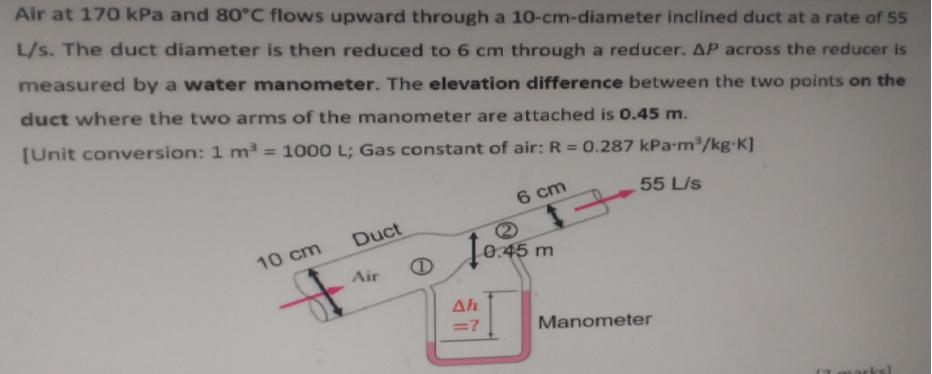Answered step by step
Verified Expert Solution
Question
1 Approved Answer
Air at 170 kPa and 80C flows upward through a 10-cm-diameter inclined duct at a rate of 55 L/s. The duct diameter is then


Air at 170 kPa and 80C flows upward through a 10-cm-diameter inclined duct at a rate of 55 L/s. The duct diameter is then reduced to 6 cm through a reducer. AP across the reducer is measured by a water manometer. The elevation difference between the two points on the duct where the two arms of the manometer are attached is 0.45 m. [Unit conversion: 1 m = 1000 L; Gas constant of air: R = 0.287 kPa-m/kg-K] %3D 6 cm 55 L/s Duct 10-45 m 10 cm Air Ah Manometer %3D? Manometer (a) Calculate the density of air using the ideal gas equation. [3 marks] (b) Calculate the velocities at point 1 and 2. [4 marks] (c) Provide 1 assumption to ensure the applicability of Bernoulli's equation. [3 marks] Air flow over the duct is steady, incompressible, and irrotational with negligible frictional effects. (d) Determine the pressure difference (AP) between point 1 and 2 by considering the [8 marks] elevation difference between the two points on the duct. (e) Compute Ah between the fluid levels of two arms of water manometer by considering [2 marks] elevation difference between the two points on the duct. Appendix 1) Pv = RT
Step by Step Solution
★★★★★
3.40 Rating (156 Votes )
There are 3 Steps involved in it
Step: 1
a Thus the density of ...
Get Instant Access to Expert-Tailored Solutions
See step-by-step solutions with expert insights and AI powered tools for academic success
Step: 2

Step: 3

Ace Your Homework with AI
Get the answers you need in no time with our AI-driven, step-by-step assistance
Get Started


